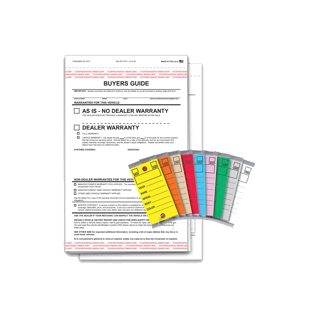
How a Strong Month-End Close Drives Dealership Financial Success
Running an auto dealership means coordinating several interconnected departments—sales, parts, service, and financing—all moving at high speed. Without a solid month-end close, it’s easy for financial accuracy to skid off course. A disciplined close process keeps your numbers reliable, your team accountable, and your dealership positioned for year-end success.
The Importance of a Disciplined Month-End Close
A clean and timely month-end close is the foundation of dealership financial management. Management decisions, factory reporting, and lender relationships all rely on accurate numbers. When accounts are reconciled and each department’s performance is captured correctly, leadership can act confidently.
Regular reconciliations also prevent costly surprises. Small discrepancies that go unchecked can snowball into major accounting issues, or worse, missed opportunities. Just as importantly, strong month- end habits reduce the chaos of year-end audits and tax preparation. A dealership that closes well every month closes the year with less stress, fewer adjustments, and better results.
Core Month-End Close Procedures
Reconciling the Balance Sheet – Start by confirming that all cash accounts, including F&I reserves and manufacturer incentive accounts, are reconciled. Review receivable schedules against the general ledger and evaluate aged customer and warranty receivables for collectability. Match vehicle inventory subledgers to physical counts in your DMS and ensure used vehicle valuations make sense.
Payables require equal attention: confirm invoices, floorplan payoffs, and trades are fully recorded. Don’t forget payroll and accruals by verifying that commissions and bonuses are complete and properly timed.
Reviewing the Income Statement – Each department’s gross profit should be compared to prior months and budget expectations. If something looks off in new, used, parts, or service, investigate early. Align factory incentives with the period when revenue was earned and double-check that prepaid expenses or allocations haven’t been spread incorrectly across months.
Schedule Review and Clean-Up – Identify stale or unexplained balances and use exception reports to flag issues requiring attention. Intercompany and dealer group balances should be reviewed regularly to ensure they’re cleared and properly recorded.
Documentation and Sign-Off – Every dealership accounting team should maintain a month-end checklist with preparer and reviewer sign-offs to ensure accountability and maintain audit readiness. Storing supporting documents electronically is a simple way to keep records organized and accessible when questions arise.
Leveraging Tools and Technology
A structured checklist remains one of the most effective tools for month-end accuracy. Assign tasks to multiple roles to create built-in review points. Most Dealer Management Systems, such as CDK, Reynolds, or Dealertrack, offer automated reports that simplify reconciliations and reduce manual errors.
Consider integrating accounting automation tools or AI-based reconciliation software to handle recurring entries and flag anomalies. Dashboards can also help track close status across departments, ensuring visibility and accountability throughout the process.
Preparing for Year-End
Conduct a “Pre-Year-End” Close – Treat November as a trial run for year-end. Address any lingering issues, clean up suspense and clearing accounts, and confirm balances with manufacturers, especially floorplan, warranty, and rebate accounts.
Align with External Parties – Coordinate early with your CPA or auditor to clarify expectations and deadlines. Review fixed asset additions and disposals, confirm depreciation schedules, and verify inventory valuations, including LIFO if applicable.
Analyze Year-End Adjustments – Check that all prepaid expenses, accruals, and bonuses are captured. Review warranty liability estimates and deferred income accounts to ensure accurate reporting.
Understanding and Managing “13th Month” Entries
Many dealerships post final year-end adjustments after December close, often referred to as “13th month” entries. These adjustments are not for factory reporting but help finalize financial statements for audit and tax purposes.
Best practices include:
- Clearly labeling and dating all “13th month” entries in the accounting system.
- Maintaining a separate journal or accounting period for these adjustments.
- Restricting access to authorized accounting or controller staff.
- Documenting all support and communicating with your CPA before posting.
Handled properly, these entries fine-tune financial accuracy without disrupting factory or internal reporting.
Handled properly, these entries fine-tune financial accuracy without disrupting factory or internal reporting.
Common Pitfalls
Some of the most frequent dealership accounting issues stem from overreliance on DMS balances without reconciling to the general ledger. Others include failing to record F&I chargebacks, overlooking small balances that carry forward month after month, or leaving accounting periods open for late changes. Locking each period immediately after close, once reviewed, prevents unapproved adjustments and strengthens internal control.
The Road Ahead
A well-executed month-end close is more than a back-office task — it’s a strategic discipline that keeps your dealership financially healthy and audit-ready. By reconciling consistently, reviewing thoroughly, and leveraging technology wisely, you can turn a tedious process into a competitive advantage. To start audit-
proofing your dealership, treat every month-end close like a mini year-end.
Author: Erika Gagne, CPA






